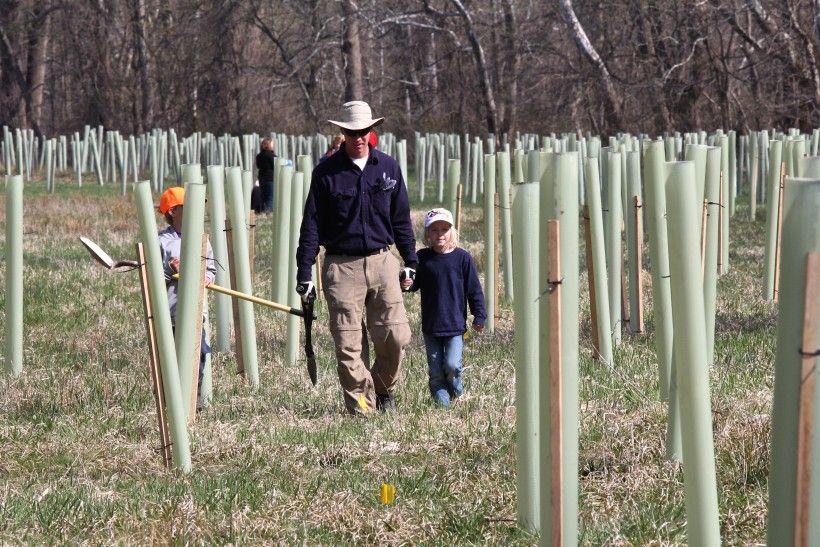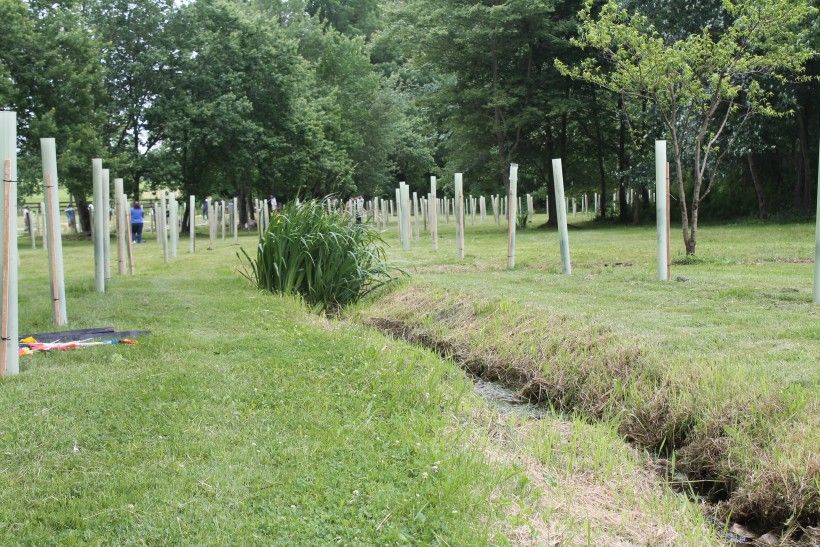The water you protect may be your own. Volunteer with us.
Years ago, forests covered 75 to 90 percent of the Brandywine-Christina Watershed, serving as a natural water purifier and providing biological diversity. Today, forested land covers only 28 percent of the area. As approximately half a million people get their drinking water from the Brandywine, reforesting the watershed is one of our major initiatives. If you can plant a tree, you can help.
Reforestation is a technical term for the action of adding more trees to the environment. It’s important for protecting the quality of water and so much more. Forested riparian buffers — areas of trees, shrubs and grasses that form buffer zones along the banks of rivers and streams — reduce water pollution, provide clean drinking water sources, preserve valuable ecosystem services, add economic benefits, and beautify the natural landscape of communities and watersheds.

Thanks to the help of more than 4,500 volunteers and many supportive partners, we’ve already added 34,500 trees to the Brandywine-Christina Watershed in Pennsylvania and Delaware. Our goal is to plant 50,000 trees in celebration of our 50th anniversary (“50 by 50”) in 2017. Please consider becoming a volunteer and planting with us.
Overcoming challenges to water quality
Deforestation is not the only challenge to water quality. Unmanaged farming practices and increased development — roads, parking lots, homes and buildings — also endanger the quality of Pennsylvania’s streams and rivers. A forested landscape, on the other hand, reduces runoff by absorbing stormwater, filters pollutants, and keeps stream banks from eroding. We target land immediately adjacent to streams (riparian areas) and steep slopes for reforestation projects because these areas are especially vulnerable to runoff.


Thanks to the help of more than 4,500 volunteers and many supportive partners, we have already added 34,500 trees in Pennsylvania and Delaware.
We also coordinate with various partners and municipalities to ensure there’s adequate protection for streams and rivers by strengthening local ordinances. With the Pennsylvania Land Trust Association, we recently completed writing a policy guide and model ordinance for Pennsylvania municipalities. This new model requires a 100- to 150-foot buffer on all streams, expanding the commonwealth’s current requirement, and also proposes restoring forested riparian areas. (Generally, the wider a forested riparian buffer is, the greater its impact on protecting water quality.) Remember, green forests mean cleaner water. So the next time you have a healthful glass of water, thank a tree.